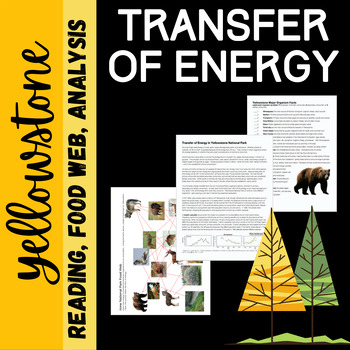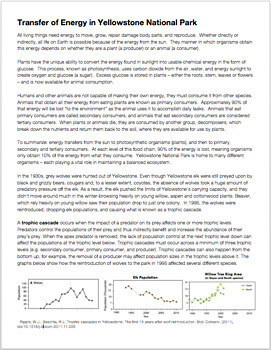Transfer of Energy In Ecosystem: Reading, Food Web and Analysis
- Zip
What educators are saying
Also included in
- This EDITABLE bundle includes everything you need for a unit on Ecology, Populations, Ecosystems and Biodiversity. It includes: readings, lecture notes, labs, activities, worksheets, quizzes, a group project, review games, a distance-learning activity and an exam. All of the materials included inPrice $39.99Original Price $56.84Save $16.85
Description
This EDITABLE activity asks students to pull information from text to build a food web for organisms in Yellowstone National Park, analyze their food webs, create a trophic pyramid, and determine how both the removal and reintroduction of wolves created a trophic cascade, affecting several other species in the ecosystem.
The reading summarizes energy flow in an ecosystem, and gives a brief history of wolves in Yellowstone. Students are provided with a fact sheet for the major organisms found in Yellowstone, and need to determine whether they are producers, primary consumers, secondary consumers, and tertiary consumers. They can then cut out their organism cards to create their food web and trophic pyramid, and answer the analysis questions about energy flow in ecosystems. This can be done individually, with a partner, or in small groups.
I have included a PDF and a Word document, so you can feel free to modify and differentiate to meet your classroom and students' needs. Enjoy!
HS-LS2-4 Use mathematical representations to support claims for the cycling of matter and flow of energy among organisms in an ecosystem.






